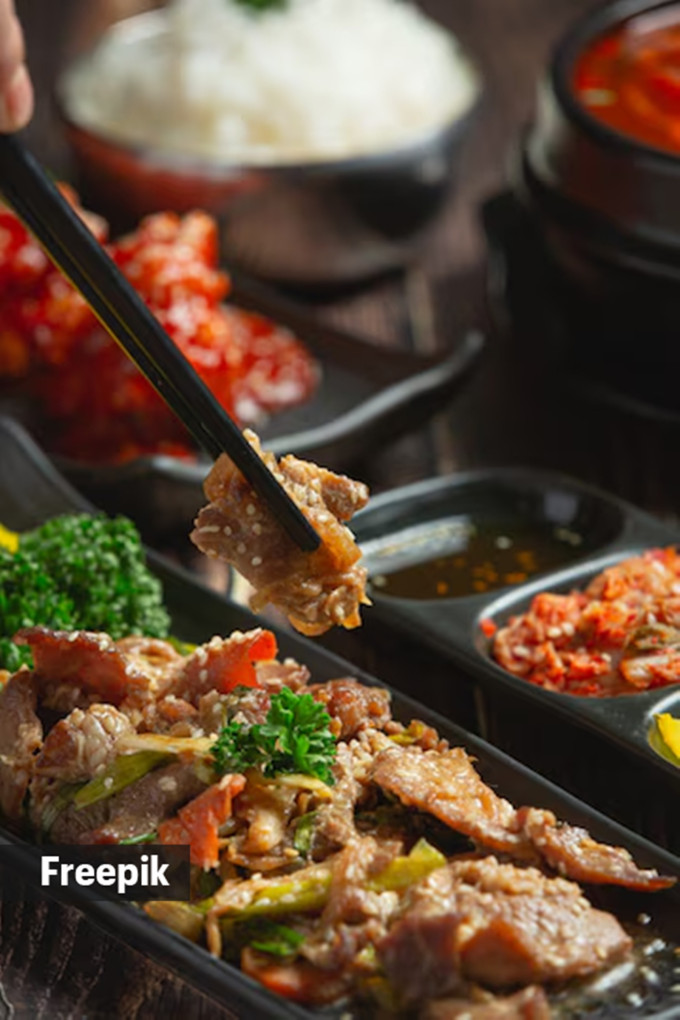How Korean food evolved in India ‘beyond the initial popularity of ramen’
Rise in demand and evolution of Korean food in India
What began as a niche interest has since blossomed into a full-fledged cultural phenomenon, with Korean food rapidly gaining mainstream acceptance throughout India. “The popularity of K-dramas in India has significantly increased the demand for Korean food, driven by the portrayal of Korean cuisine in these shows,” says Garima Dev Verman, certified nutritionist and medical content analyst with The Healthy Indian Project (THIP).
While ramen may have been the initial gateway to Korean cuisine for many Indians, lesser-known dishes like kimchi, spicy ramen, bibimbap, buldak and tteokbokki have seen notable rise in popularity. “The global Hallyu wave, encompassing Korean pop culture including K-pop music, has further amplified interest in all things Korean, their food too,” she said.

At the forefront of this culinary revolution is the growing number of Korean restaurants, each striving to introduce authentic flavours and techniques to the Indian palate. Influencers and celebrities sharing their experiences with Korean cuisine “have also played a crucial role,” according to Verman. She also said the availability of Korean ready-to-eat products in Indian supermarkets “has made Korean cuisine more accessible”.
“While bibimbap and kimchi are now widely recognised and enjoyed, other dishes such as kimbap (Korean sushi rolls) and jjigae (Korean stews) are also gaining traction,” notes Badal Saboo, partner at Gung The Palace, an authentic Korean restaurant in Noida.
Banchan, a variety of small side dishes served alongside main courses, offers a diverse tasting experience. Japchae, made from sweet potato noodles mixed with vegetables and meat, provides a unique flavour profile that appeals to local palates. Samgyeopsal, grilled pork belly wrapped in lettuce leaves, has also found a niche among those who appreciate hearty and flavourful meals. These expanded offerings reflect the growing sophistication and curiosity of Indian consumers regarding Korean cuisine.
Alignment of nutritional profiles of traditional Korean dishes with the dietary preferences in India
The nutritional profile of traditional Korean dishes and the emphasis on fermentation and natural preservation methods in Korean cooking aligns with Indian dietary preferences and health benefits.
Chef Dheeraj Mathur, cluster executive chef, Radisson Blu, Kaushambi, Delhi NCR, shares that nowadays, youngsters prefer healthy food even if they’re eating out. Korean cuisine also typically incorporates dishes which have low-fat content. “Korean food has certain health benefits associated with it, use of ingredients such as tofu, a variety of micro-greens, and seafood ensures a good intake of vitamins, minerals, and proteins, and traditional Korean dishes like kimchi, a staple in Korean cuisine, is rich in probiotics which helps in easy digestion.”
Shriya Nayak, owner of Mamba Resto Bar in Thane, agrees. “The emphasis on seasonal foods and a variety of textures speaks to India’s growing interest in plant-based diets and healthy eating.”
 Korean restaurateurs in India have embraced creative adaptations (Source: Freepik)
Korean restaurateurs in India have embraced creative adaptations (Source: Freepik)
Challenges faced when sourcing authentic Korean ingredients in India
Maintaining true authenticity of the cuisine can be a challenge, as many key ingredients are not readily available or have to be imported, driving up costs.
Saboo agrees that chefs in India face several challenges when sourcing authentic Korean ingredients, primarily due to their limited availability and the high import costs associated with key items such as gochujang (Korean chilli paste) and doenjang (fermented soybean paste). “To overcome these difficulties, chefs often use locally available substitutes, such as Indian radish in place of Korean radish for kimchi, and locally grown Napa cabbage and Korean chilli peppers.”
Concurring, Chef Shankar Krishnamurthy, co-founder and director of Culinary Ops and Chef Relations, Book My Chef, said that ingredient availability in India can be limited. “Robust trade and growing demand” are improving the situation, he said, especially in major metropolitan areas.
Chef Mathur, however, differs. He says sourcing Korean ingredients is not that difficult today. “Elevated popularity and increased demand has led supermarkets and online platforms to keep the required products as per the audience’s interest.” He also said that Korea has increased production to meet the export demands and enhanced their trading route.
Adapting menus to cater to Indian dietary preferences
A chef’s expertise lies in understanding local palates and adapting flavours accordingly. So, another roadblock that many Korean chefs face is the prominence of pork and beef in traditional Korean dishes. Because of this, menu adaptations have become a necessity to cater to Indian dietary preferences, including vegetarian options and excluding certain meats.
Despite these challenges, Korean restaurateurs in India have embraced creative adaptations, finding innovative ways to fuse local flavours with traditional Korean recipes. “Menus in India are generally modified to accommodate local dietary requirements by offering a choice of vegetarian alternatives and omitting specific meats, as Korean cuisine frequently incorporates pig and beef,” says Nayak.
For vegetarian versions of meat-based dishes, Chef Mathur explains, alternatives like mushrooms, tofu, or paneer are used to replicate textures and flavours without compromising on authenticity. “As an example Bulgogi, a traditional dish made with beef, can be prepared using chicken or even paneer to suit local taste,” he said.
For those who avoid certain meats, Saboo talks about the use of pork-free and beef-free versions of popular dishes like bulgogi (marinated grilled meat) and galbi (marinated short ribs). Fusion dishes such as paneer kimchi stir-fry, blend Indian ingredients with Korean cooking techniques, ensuring the cuisine is both authentic and suitable for local dietary restrictions.
Disclaimer: The copyright of this article belongs to the original author. Reposting this article is solely for the purpose of information dissemination and does not constitute any investment advice. If there is any infringement, please contact us immediately. We will make corrections or deletions as necessary. Thank you.
